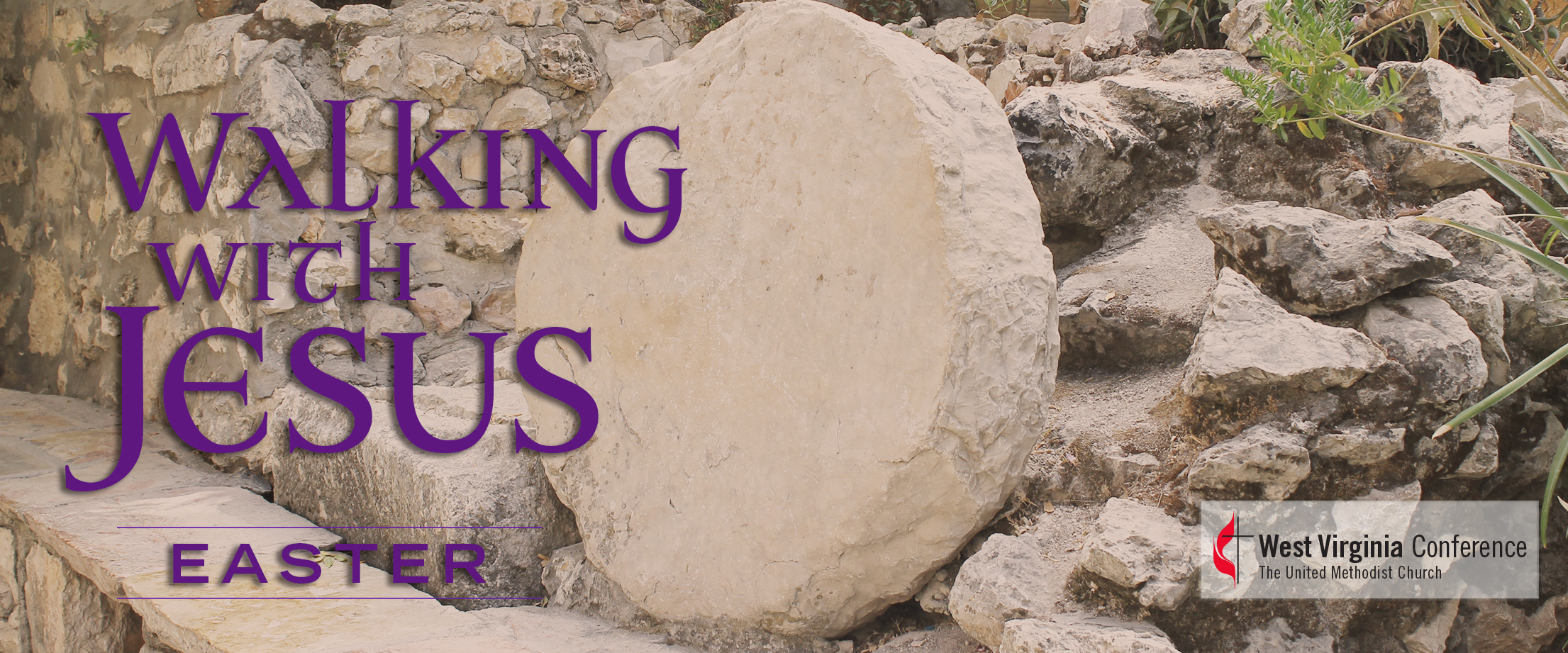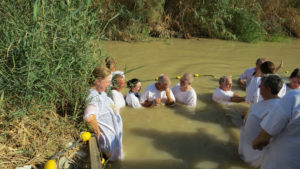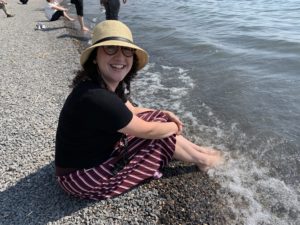
Second Sunday of Easter
Lectionary Readings: Acts 2:14a, 22-32, Psalm 16, 1 Peter 1:3-9, John 20:19-31
Rev. Krysta Rexroad Wolfe
Cross Lanes UMC
Midland South District
John 20:19-31
Every year the story of Jesus appearing to the disciples in a locked room—twice—comes the second week after Easter. No matter which of the synoptic gospels dominates the rest of the year, the Gospel of John always takes this Sunday. There is something about this experience the disciples have with the resurrected Jesus that makes it a constant in the Lectionary rotation, putting it in the same class of stories as the annunciation and nativity.
In the story, the disciples are hiding. Mary had come to them earlier in the day and evangelized, repeating the words Jesus had given her for them, “I have seen the Lord” (John 20:18). They responded by locking themselves in a room. But the lock wasn’t enough to keep truth out, and suddenly they found themselves confronted by the resurrected Jesus.
The sight of him must have been terrifying, because Jesus spoke words of peace two times in quick succession (v. 19, 21). Without giving them much time for questions, Jesus repeated his mission to them. He breathed on them and sent them out with the authority to forgive to sins. When Thomas heard what had taken place while he was out, he was incredulous. It wasn’t enough for Mary to tell him Jesus had risen. It wasn’t enough for the ten apostles to tell him. He had to see Jesus. He had to be breathed on by Jesus. He had to touch Jesus’s crucifixion wounds. For this demand, Thomas is known in history as “Doubting Thomas”.
Maybe he deserves his nickname. We know from John 14:4-5, Thomas was good at asking questions, but I think it was Jesus who initiated the thirst for firsthand, bodily experience. Throughout the Gospel of John, Jesus plants seeds which reveal how important the senses are for faith development. In the Gospel of John when Jesus first called disciples, he invited them to “come and see” (John 1:39). In John 2 Jesus enters public ministry only after turning water into the best wine for wedding guests to drink. In John 6 after feeding the multitudes (v. 1-15), Jesus tells a group of dissenters that they must eat his flesh and drink his blood to abide in him (v. 52-59). In chapter 20 Jesus appears to Mary and the disciples in the flesh. Jesus taught through all five senses, and it is with all five senses Thomas wished to experience Jesus again.
The crazy thing is Jesus obliged Thomas. Jesus appeared to the disciples a second time (a third time, counting the apostle Mary’s initial encounter) in order to invite Thomas to believe through sight and touch. If I had to guess why this story appears year after year following Easter, it’s to remind Christians that it is through bodily experiences others will come to believe. Christianity was not meant to be theoretical, or take place only the realm of inward feeling. Jesus’s incarnation shows us that the ministry priority for every soul is to tend to the needs of every body, which is why good news is a bag of groceries, and a ride to work. It’s the sound of children safe and playing. It’s the smell of clean, unpolluted air. It’s the vibration of good music. Good news is guaranteed shelter. Good news is the name we give whatever we can share to make sure people experience the saving work of Jesus.
 On a hot day in October, 2019 200 United Methodists from The West Virginia Annual Conference gathered at the Jordan River. I had anticipated the visit to the Jordan to be one of the highlights of my trip. I was sure the water Jesus was baptized in—the one place no one had built a church over—was going to be a place buzzing with holiness. I didn’t anticipate the site to be so crowded. I didn’t anticipate fighting flies off my face and hair. I didn’t anticipate the muddy water. I didn’t anticipate the utterly communal changing room. To be direct, I was disappointed. I was disappointed, until I remembered that Jesus would have experienced it similarly. Crowded, hot, muddy. There was a not a holy bubble around Jesus. No wonder Thomas asked to see Jesus’s body again. He wanted to make sure that even in a post-resurrection world, bodies still mattered--and they did.
On a hot day in October, 2019 200 United Methodists from The West Virginia Annual Conference gathered at the Jordan River. I had anticipated the visit to the Jordan to be one of the highlights of my trip. I was sure the water Jesus was baptized in—the one place no one had built a church over—was going to be a place buzzing with holiness. I didn’t anticipate the site to be so crowded. I didn’t anticipate fighting flies off my face and hair. I didn’t anticipate the muddy water. I didn’t anticipate the utterly communal changing room. To be direct, I was disappointed. I was disappointed, until I remembered that Jesus would have experienced it similarly. Crowded, hot, muddy. There was a not a holy bubble around Jesus. No wonder Thomas asked to see Jesus’s body again. He wanted to make sure that even in a post-resurrection world, bodies still mattered--and they did.
Jesus lived in a body. Jesus healed, fed, and protected other bodies. Jesus was baptized in a body and instituted the Lord’s Supper by sharing bread. Jesus laid down his life in a body. Jesus was resurrected in a body. He asked his disciples to do the same.
In Jerusalem I put my nose to the spices sold in the Old City. I stuck my feet in the Sea of Galilee to cool off midday. I looked over a cliff at Megiddo and took in the vast valley of Armageddon. I picked flowers at the Mount of the Beatitudes. The group sang Christmas songs at the Chapel of the Shepherd's Field, where the angels sang after Mary delivered Jesus. I went to Israel to touch the things Jesus touched, to smell, hear, taste, and see what Jesus did, believing it would be an other worldly experience, but what it really did was remind me—as this story of Thomas does—that bodies matter. To follow Jesus is to participate in a ministry of the senses, and to proclaim with all the food, shelter, protection we can offer, “My Lord and my God” (v. 28).
I looked over a cliff at Megiddo and took in the vast valley of Armageddon. I picked flowers at the Mount of the Beatitudes. The group sang Christmas songs at the Chapel of the Shepherd's Field, where the angels sang after Mary delivered Jesus. I went to Israel to touch the things Jesus touched, to smell, hear, taste, and see what Jesus did, believing it would be an other worldly experience, but what it really did was remind me—as this story of Thomas does—that bodies matter. To follow Jesus is to participate in a ministry of the senses, and to proclaim with all the food, shelter, protection we can offer, “My Lord and my God” (v. 28).